Sony A900 Full-Frame: Hands-On Preview
by Wesley Fink on September 12, 2008 12:00 AM EST- Posted in
- Digital Camera
Full-Frame, 24.6MP, and SteadyShot Integrated IS
The A900 is the first Sony DSLR to feature a full-frame sensor. The sensor is approximately the size of a frame of 35mm film, which is 24x36mm.
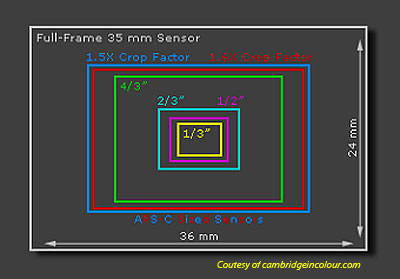
Most digital cameras today use a sensor closer to APS-C size. As a result, lenses mounted on APS-C DSLRs behave as if they are 150% to 200% longer than the marked focal length. Other Sony DSLR cameras, like the A700, also feature a 23.5x15.6mm APS-C sensor.
In the computer world, increasingly smaller traces mean higher density, more transistors, and generally better and faster performance. However, the digital sensor is not a digital device; it is an analog device that gathers light and turns it into a digital signal. Sensors are the reverse of digital electronics in that larger is almost always better in sensors, with everything else equal. More details on how digital sensors actually work can be found in The Digital Sensor.
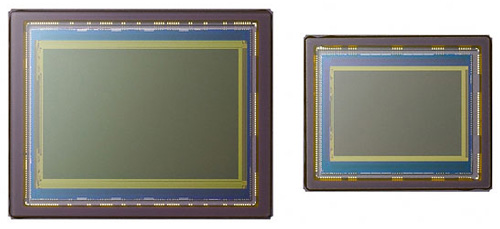
| DSLR Sensor Comparison | ||||
| Camera | Effective Sensor Resolution | Sensor Dimensions and Area |
% of Full-Frame | Sensor Density (MP/cm2) |
| Olympus E-520/E-3 | 10 | 13.5x18 2.43 cm2 |
28.10% | 4 |
| Canon XSi | 12.2 | 14.8x22.2 3.28 cm2 |
38.00% | 3.7 |
| Sony A350 | 14.2 | 15.8x23.6 3.72 cm2 |
42.90% | 3.8 |
| Pentax K20D | 14.6 | 15.6x23.4 3.65 cm2 |
42.20% | 4 |
| Canon 50D | 15.1 | 14.9x22.3 3.32 cm2 |
38.40% | 4.5 |
| Sony A700, Nikon D300, Nikon D90 | 12.3 | 15x23.5 3.66 cm2 |
42.40% | 3.3 |
| Nikon D700/Nikon D3 | 12.1 | 24x36 8.64 cm2 |
100% | 1.4 |
| Canon 5D | 12.7 | 24x36 8.64 cm2 |
100% | 1.5 |
| Canon 1Ds Mark III | 21.1 | 24x36 8.64 cm2 |
100% | 2.4 |
| Sony A900 | 24.6 | 24x35.9 8.61 cm2 |
100% | 2.9 |
The last column in the chart is the one that tells the story most accurately, however. Here the effective sensor resolution is divided by the sensor area to yield a sensor density. The lower the density, the larger the individual pixel size, and the more data that pixel can gather - all else being equal. There are a few surprises here, such as the Sony A350 being essentially the same density as the Canon XSi, and the new Canon 50D having the highest density of any current DSLR camera.
The last column does put into perspective the true potential of the full-frame sensor and shed some light on the true meaning of Sony's 24.6MP A900 sensor. At 2.9MP per cm2, the A900 still exhibits a lower density and theoretically better high ISO performance that any current APS-C DSLR. This is very much at odds with the ridiculous claims many on the web are making about Sony going too high in resolution on the A900. In fact, sensor density on the A900 is lower than the 10MP Canon 40D, which is 3.1.
The point is that any issues Sony may be found to have with noise are not the result of pixels being "too small". All else being equal the high ISO noise should be at least as good as an 8 to 10MP Canon sensor. Where the Sony does suffer is in comparison to sensor density of other full-frame sensors. In that metric the Sony has twice the pixels per cm2 of a Nikon D3/D700 and Canon 5D, and keeping up in high ISO performance with those cameras would be quite a feat.
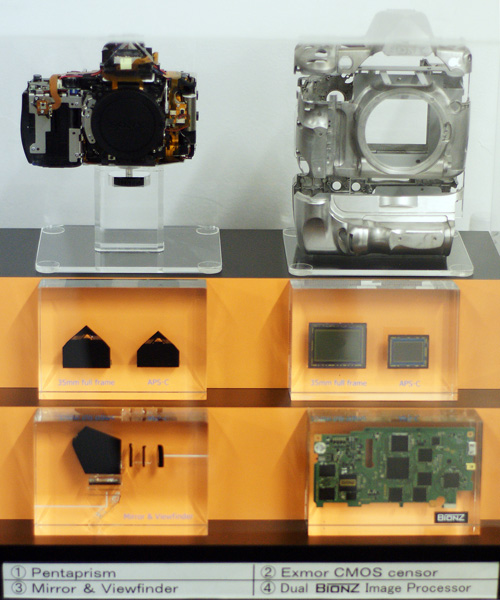
Moving a digital SLR camera to full-frame involves a lot more than just the sensor, however. Everything is bigger, heavier, and more difficult to accomplish. You can clearly see some of those challenges in this Sony case comparing sensors, pentaprisms, the microprocessor to move the huge increase in data (dual BIONZ), and the motors to control the in-camera image stabilization (IS). Rumors were rampant for months that Sony just could not get their signature SteadyShot IS to work in full-frame, which would have been a major failing had it turned out to be true. Now that we have used the A900 hands-on we can report that SteadyShot is definitely working as it should, and Sony still claims a 2.5 to 4.0 stop improvement in hand-holdability in the full-frame A900.
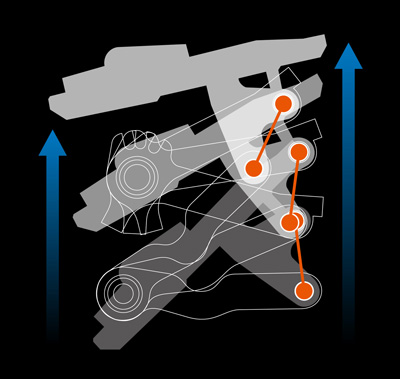
To accomplish this Sony employed a parallel-link to move instead of flip the mirror. This reduced vibration substantially to reduce the demands on SteadyShot. It also had the benefit of allowing a shorter front to back dimension while still utilizing a full-frame mirror.
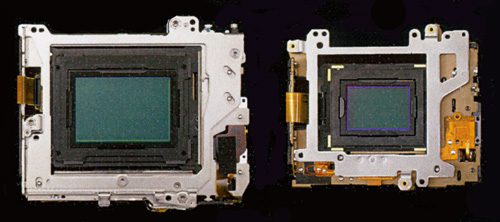
The second innovation was the sensor motors themselves. Since SteadyShot is controlling heavier components in even greater motion than APS-C, the motors required a 50% increase in output. Amazingly, the motors were beefed up, twice as many pixels are being captured and processed with dual BIONSZ processors, and with the same NP-FM5000H battery used in the A700, A350, A300, and A200 they extended the expected battery life in the A900 to 850 shots. Even if you're predisposed to hate Sony because you are a loyal Canon fan, you have to admire the engineering that went into solving many of these challenges.










53 Comments
View All Comments
chiew - Saturday, September 13, 2008 - link
what conditions did the a700 survive in that the 1Ds didn't?hanugro - Friday, September 12, 2008 - link
Hm ,I do remember last year that I heard about shooting video and choosing 1 fram as digital still from SOny CEO himself. I don't know whether it is his idea or he heard from someone else. But Sony has stated that it won't put feature that is not ready. I am sure it has cross Sony's mind. Also they are one that among the first develop sensor that can take 120fps but at lower resolution. You have to understand that this 24MP create about 15MB per frame. If your video is 24fps then does the CF available now is big enough? Also don't tell me that SOny should allow lower HDTV 1920x1080 pixel video and hope that you can extract one frame of it and sell it to newspaper. They will laugh at it, newspaper / magazine needs at least 6-12MP pictures before they consider to publish it. Also if you want video then buy videocam instead. I imagine using liveview (or using the sensor for video) will shorten the live of the sensor itself. Whay would I want to do that?aeternitas - Friday, September 12, 2008 - link
I think people willing to pay 3k for a camera;#1 Dont care about 100$ battery. (wtf?)
#2 Could get something better for a bit more if they want new.
#3 Something better for less if they buy used.
#4 Nikon and Cannon will come out with something better for less in a matter of a few months.
"Full frame" is great, but all it does is get rid of crop factoron 35mm cameras. What happeneds when CCDs get bigger? They will need to, becuse no matter what technology the camera has in it, SnR is going to be better at lower MP resolutions on the same size CCD. 24MP sounds fantastic, but noice reduction does not always equate to added detail. The only real way to get more detail, is to actualy replace noise with information and the real only wat to do that is to make the CCD bigger or make the pixelsites bigger.
gipper51 - Friday, September 12, 2008 - link
Nice preview of a very interesting camera. I did notice several times you mentioned the Sony as being twice the resolution as the D3/5D which is not accurate. It has twice the pixels but you need 4x the pixels to truly double a sensors resolving power.This camera should shake up the industry on the high end. I can't see Canikon shooters ditching their current investments and going with Sony because of this cam, but at the very least the era of high resolution FF cameras costing as much as a new compact car is over. Bravo Sony.
chiew - Friday, September 12, 2008 - link
Just a note: Canon's 1Ds mkIII has a larger viewfinder than the A900 in specs...Canon 1Ds mkIII: .76x 100% FF vf
Sony A900: .74x 100% FF vf
Yea the Canon costs more than 2x as much. However, if history has its say, Canon will trickle down the viewfinder like it did from the Canon 1Ds mkII to the 5D (0.70x in the 1Ds mkII and 0.71x in the 5D). Whatever Canon has up its sleeve, its likely a full frame, and hopefully Canon users will get a nice large viewfinder in whatever the followup to the 5D is.
KorruptioN - Friday, September 12, 2008 - link
As for the bump in fps rate with cropped lenses like Nikon does, apparently this is due to a lens design decision by Minolta. The aperture arm must travel a much more significant distance compared to the aperture arms in Nikon's lenses. This physical requirement alone is likely what is limiting all of Sony's DSLRs to 5fps maximum.Wesley Fink - Friday, September 12, 2008 - link
I shot several images with DT lenses and the A900 crop factor worked perfectly. You can also manually force DT, even on a full-frame lens. With that capability, and an 11 megapixel image size in crop mode, a faster shooting speed would have been an incredible feature. The Nikon 5 megapixel crop-mode image is OK for newspaper but too small for some things. An 11 megapixel crop is a lot more interesting.strikeback03 - Friday, September 12, 2008 - link
The point of an L bracket is to get the flash above the lens regardless of camera orientation. This new flash still has the flash offset to the side, so you still need a bracket if you want to move your flash over top of your lens.Wesley Fink - Friday, September 12, 2008 - link
There are some cases where an in-line flash is more desirable, but for most situations where photographers use a flash the Sony 90 degree turn will accomplish just what the photographer is looking for when he attaches an L bracket.haplo602 - Friday, September 12, 2008 - link
I bought a Nikon F75 as my first SLR after some long search and decision making. Then a few days after it's arrival I learned about the Minolta Dynx 7 and regreted my decision. A few months later I had the opportunity to actualy shoot with a Minolta 7D and I was even more unhappy.Now with this new Sony, I am close to tears. The Nikons I have are solid cameras, I do not complain there, however any Nikon camera close to this Alpha sensor will cost a fortune which I cannot afford. The A900 seems like a quality and "cheap" camera.
(I have to add I never owned a DSLR :-))